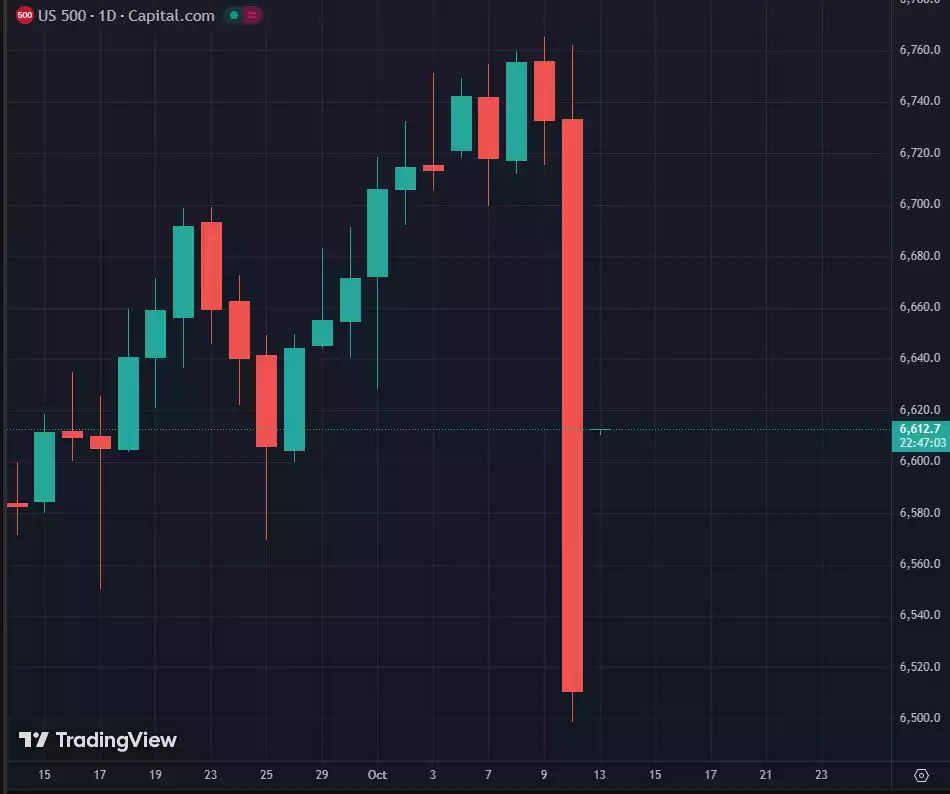Ratio That Predicts Crashes Just Hit
News
|
Posted 13/10/2025
|
5532
Now and then, the stock market does something so rare that it stops even veteran investors in their tracks. According to recent analysis, we’ve just witnessed one of those moments — something that’s only happened three times since 1871. The previous two ended badly.
US stock market dump at the end of trading last week:

The measure leading to this warning is the Shiller CAPE ratio. This term refers to the cyclically adjusted price-to-earnings measure created by economist Robert Shiller. Unlike the regular P/E ratio that looks at one year of earnings, the CAPE compares prices to average inflation-adjusted earnings across the past ten years. It’s designed to filter out temporary noise and reveal when markets have drifted too far from their fundamental base.
Right now, that ratio is sitting at levels only seen before the Great Depression and the dot-com crash. Both of those eras were marked by confidence, liquidity, and a sense that the rules had changed — right up until they hadn’t.
Of course, today’s backdrop isn’t identical. Central banks are far more active, global capital moves at lightning speed, and the economy is less tied to any single sector. Yet the signal still matters. When valuations reach this kind of altitude, history doesn’t predict the exact timing of the fall — but it does suggest that what comes next rarely ends smoothly.
Markets at these extremes tend to become fragile. Markets could keep climbing for months, but each additional gain can worsen the fall. A miss in earnings, a shift in interest-rate expectations, or even a subtle change in sentiment can spark a chain reaction.
That’s why some investors are once again looking for shelter in real assets. Gold doesn’t depend on valuations or quarterly guidance — it reflects trust. When that trust begins to crack, it tends to shine.
History doesn’t always repeat exactly, but this ratio is definitely sending shockwaves of fear through markets.